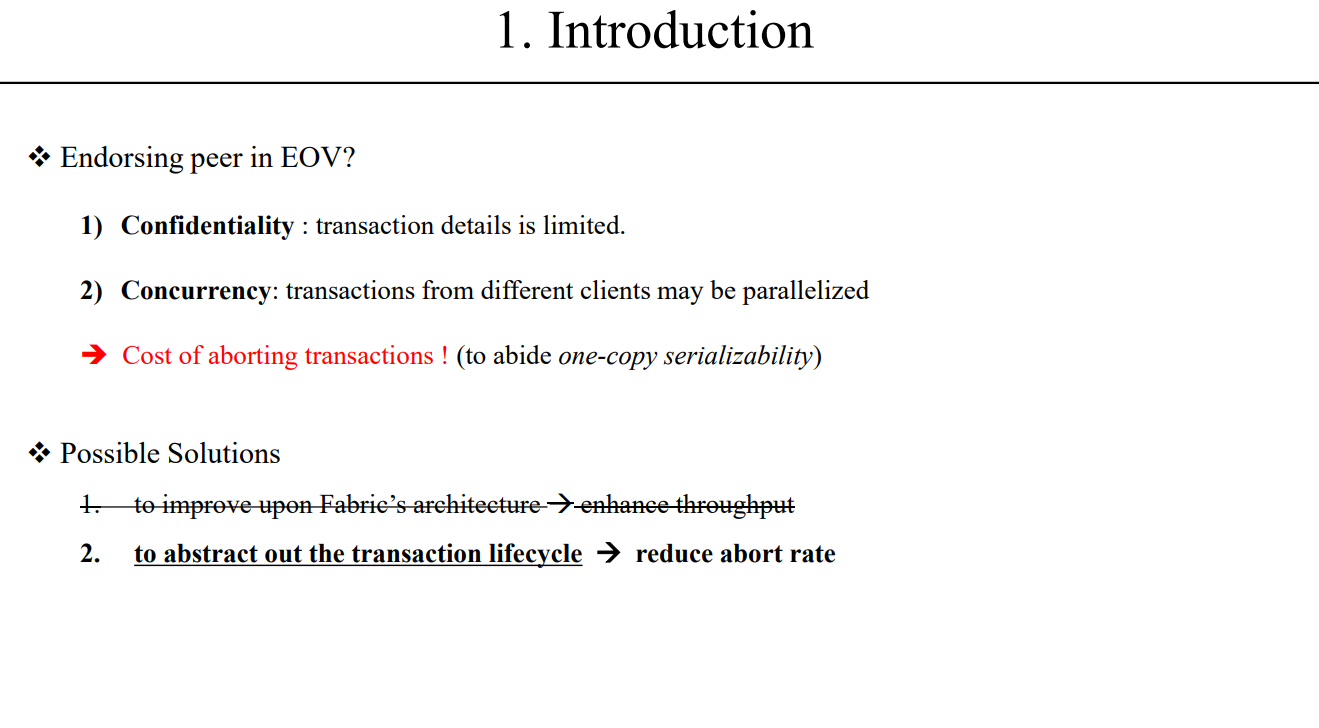Title:
A Transactional Perspective on Execute-order-validate Blockchains
Authors:
Pingcheng Ruan, Dumitrel Loghin, Quang-Trung Ta, Meihui Zhang, Gang Chen, and Beng Chin Ooi
Journal/Conference:
SIGMOD '20
Source: https://dl.acm.org/doi/10.1145/3318464.3389693
Abstract:
Smart contracts have enabled blockchain systems to evolve from simple cryptocurrency platforms to general transactional systems. A new architecture called execute-order-validate has been proposed in Hyperledger Fabric to support parallel transactions. However, this architecture might render many invalid transactions when serializing them. This problem is further exaggerated as the block formation rate is inherently limited due to other factors beside data processing, such as cryptography and consensus. Inspired by optimistic concurrency control in modern databases, we propose a novel method to enhance the execute-order-validate architecture, by reordering transactions to reduce the abort rate. In contrast to existing blockchains that adopt database's preventive approaches which might over-abort serializable transactions, our method is theoretically more fine-grained: unserializable transactions are aborted before reordering and the rest are guaranteed to be serializable. We implement our method in two blockchains respectively, FabricSharp on top of Hyperledger Fabric, and FastFabricSharp on top of FastFabric. We compare the performance of FabricSharp with vanilla Fabric and three related systems, two of which are respectively implemented with one standard and one state-of-the-art concurrency control techniques from databases. The results demonstrate that FabricSharp achieves 25% higher throughput compared to the other systems in nearly all experimental scenarios. Moreover, the FastFabricSharp's improvement on FastFabric is up to 66%.
Presentation material:
Introduction


Theoretical Analysis





Evaluation




![[논문 세미나] A Transactional Perspective on Execute-order-validate Blockchains](https://img1.daumcdn.net/thumb/R750x0/?scode=mtistory2&fname=https%3A%2F%2Fblog.kakaocdn.net%2Fdna%2FVPtVl%2FbtsMDILfMW5%2FAAAAAAAAAAAAAAAAAAAAAG0tG_ND3fs9C2O5fV0o3OdJ8Bzn7zE01tgW3Nr-ktAK%2Fimg.png%3Fcredential%3DyqXZFxpELC7KVnFOS48ylbz2pIh7yKj8%26expires%3D1767193199%26allow_ip%3D%26allow_referer%3D%26signature%3DrEsAgAhE2X72CUc8RRSeyO4%252F8W8%253D)